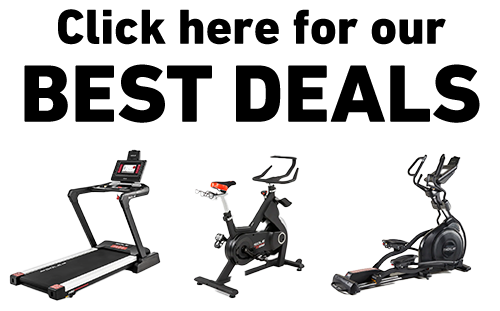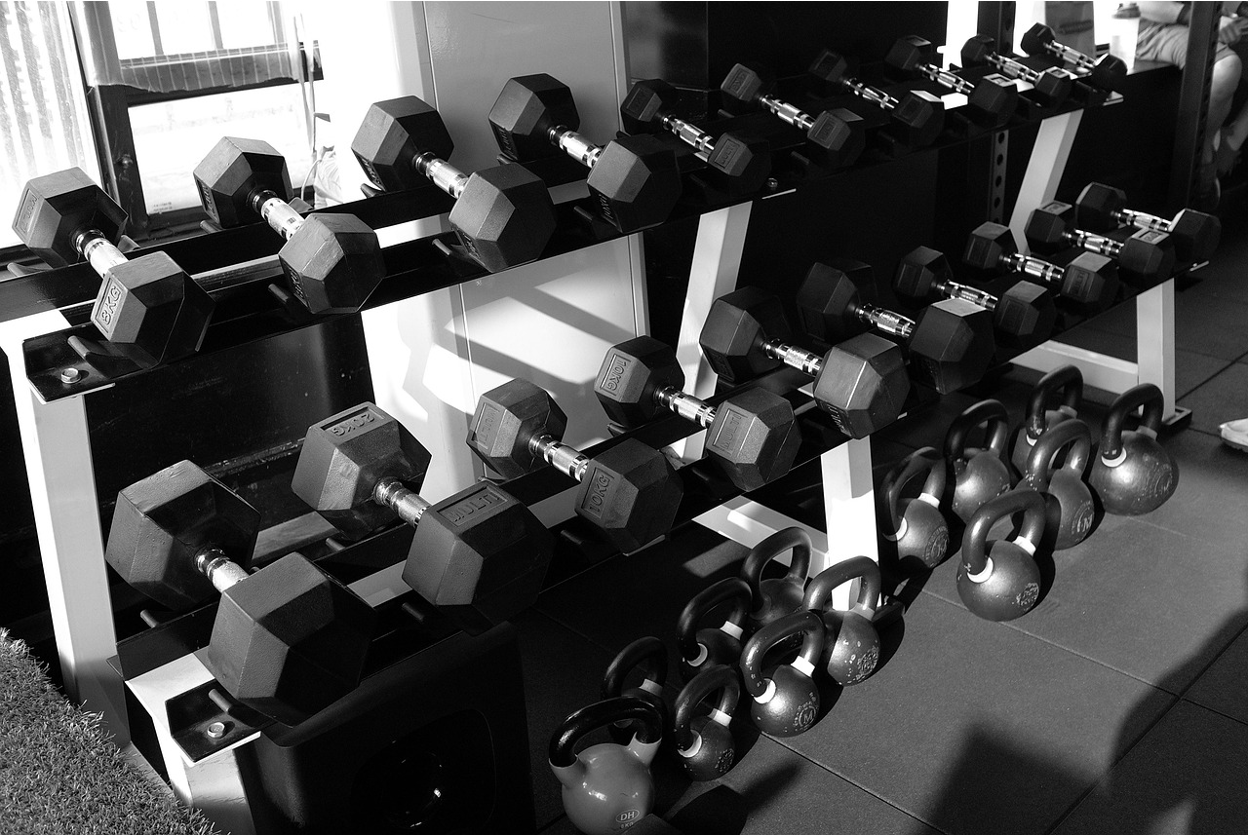Key Takeaways
- Dumbbell rows are a must for building a strong, balanced, and functional back while improving posture, core stability, and performance in lifts like deadlifts and pull-ups.
- Single-arm dumbbell rows enhance mind-muscle connection, engage stabilizers, and help correct muscle imbalances by allowing each side to work independently.
- Double-arm dumbbell rows support heavier lifting and overall back thickness, making them ideal for building strength and mass efficiently.
- Advanced techniques like drop sets, time under tension, and rest-pause training can maximize growth, endurance, and pulling power in both single and double-arm rows.
- SOLE's 80-lb SW180 Adjustable Dumbbells are versatile, space-saving weights that come with the free SOLE+ app for guided home workouts.
Why Dumbbell Rows Are Essential for a Strong Back
Few exercises rival the dumbbell row when developing a strong, thick, and functional back. Whether performed with one arm at a time or both simultaneously, rows build pulling strength, improve posture, and enhance performance in other lifts like deadlifts and pull-ups.
In addition to raw strength, dumbbell rows help improve muscle balance between sides, engage stabilizing muscles in the core and shoulders, and support better movement mechanics for daily activities and athletic performance. They’re versatile, easy to scale with weight, and can be incorporated into nearly any back-focused workout, making them an essential tool for building a well-rounded, powerful upper body.
|
Build Your Foundation with Premium-Grade Strength Equipment!
 Complete Your Home Gym:
Why Choose SOLE Strength: ✓ Heavy-duty steel construction with rust protection 30-Day Money-Back Guarantee: Love it or return it, no questions asked. |
Single-Arm Dumbbell Rows: Technique and Benefits
To perform a single-arm dumbbell row, place your right knee and right hand on a bench, holding a dumbbell in your left hand. Keep your back flat, core engaged, and shoulders squared throughout the movement. Pull the dumbbell toward your hip, focusing on squeezing your lats and mid-back at the top. Lower the weight slowly under control to maximize muscle engagement and reduce the risk of injury. Complete the desired number of reps, then switch sides.

Single-arm dumbbell rows target each side independently, helping correct muscle imbalances and build a stronger back.
Primary Muscles Targeted
Single-arm rows primarily work the latissimus dorsi, rhomboids, and trapezius, while also engaging the rear deltoids, biceps, forearms, and core stabilizers. This combination makes it a highly effective exercise for building a strong and balanced upper body.
Unilateral Training Advantages
Training one side at a time allows each side of the body to work independently, which improves coordination and strengthens stabilizing muscles. This approach enhances the mind–muscle connection, helping you feel each contraction more effectively and ensuring balanced muscular development.
Fixing Muscle Imbalances
Many lifters have a dominant side that tends to take over during compound movements. Single-arm rows force each side to pull its own weight, helping correct asymmetries and promote balanced strength and size over time.
When to Choose Single-Arm Rows
Single-arm rows are ideal for beginners learning proper form and control. They’re also perfect for athletes looking to improve core stability and unilateral strength. Additionally, lifters who want to address back asymmetry or strengthen weaker sides will benefit greatly from incorporating this variation into their routine.
Double-Arm Dumbbell Rows: The Complete Guide
To perform a double-arm dumbbell row, hold a dumbbell in each hand with palms facing in. Bend at the hips, keeping your back straight, chest up, and core engaged. Pull both dumbbells toward your waist simultaneously, focusing on squeezing your lats and upper back at the top of the movement. Lower the weights slowly and under control, maintaining a flat back throughout to maximize engagement and prevent strain. This variation allows you to train both sides evenly and efficiently.
Muscles Worked
Double-arm rows target the same primary muscles as single-arm rows, including the latissimus dorsi, rhomboids, trapezius, rear deltoids, biceps, and forearms. Because both sides work together, you can often handle heavier weights, which increases overall load on the lats and traps, promoting greater strength and thickness in the upper back.
Strength and Mass Building Benefits
This variation is perfect for lifters focused on hypertrophy and overall back development. Training both sides simultaneously allows you to lift heavier weights than with single-arm rows, making it highly efficient for building mass and increasing pulling strength. It’s a go-to exercise for developing a powerful and balanced upper body.
Common Form Mistakes to Avoid
To get the most out of double-arm rows, avoid rounding the lower back, jerking the dumbbells with momentum, or letting your shoulders roll forward at the top. Maintaining proper form is crucial to target the correct muscles and reduce the risk of injury while ensuring maximum gains from each set.
Muscle Activation Differences Between Both Variations
While both single-and double-arm dumbbell rows target similar muscles, they differ in activation and stabilization demands. The main distinction lies in the unilateral versus bilateral nature of the movements.
Latissimus Dorsi Engagement
Single-arm rows allow for a deeper stretch and stronger mind-muscle connection, often producing higher peak lat activation. The anti-rotation demand engages deeper lat fibers and improves neuromuscular coordination. Double-arm rows, though slightly lower in peak activation, enable heavier loading and greater total volume, supporting overall back thickness and strength. Combining both variations optimizes development: single-arm for targeted activation, double-arm for heavy lifting.
Core Stabilization Requirements
Single-arm rows challenge the core with rotational forces, engaging obliques and stabilizers, making them excellent for functional core strength. Double-arm rows provide symmetrical loading, mainly stressing sagittal plane stability, which translates well to compound lifts like deadlifts and squats.
Secondary Muscle Recruitment
Single-arm rows recruit the rotator cuff for shoulder stability, while double-arm rows emphasize the traps and rhomboids for upper back thickness and posture. Both variations engage biceps and forearms, with single-arm rows slightly enhancing biceps activation due to unilateral focus.

Single-arm rows challenge your core with rotational stability, engaging obliques and deep stabilizers effectively.
Advanced Training Techniques for Dumbbell Rows
Drop Sets for Muscle Growth
Drop sets are an effective way to push your muscles beyond failure. Start with a challenging weight and perform your set until near failure. Immediately reduce the weight by 20–30% and continue for additional reps. This technique increases total training volume and recruits more muscle fibers, promoting hypertrophy.
Time Under Tension Methods
Slowing the eccentric (lowering) phase of each row maximizes muscle fiber engagement and encourages growth. Focus on a controlled 3–5 second descent while maintaining proper form. This increases time under tension, placing sustained stress on the back muscles for improved strength and size.
Rest-Pause Training
Rest-pause training allows you to extend a set beyond traditional limits. Perform a set to near failure, rest for 10–15 seconds, then continue for a few more reps. This method is ideal for breaking through plateaus and boosting both strength and muscular endurance in the lats, traps, and biceps.
Pick the Right Row for Your Goals
If your goal is to improve stability, core engagement, and correct muscle imbalances, single-arm rows are the ideal choice. They allow you to focus on one side at a time, enhancing mind-muscle connection and promoting balanced development.
For building overall mass, strength, and training efficiency, double-arm rows are better suited, allowing heavier loads and greater total volume.
The smartest approach is to incorporate both variations into your routine, using single-arm rows for targeted activation and double-arm rows for heavy lifting ensures maximum strength, size, and balanced back development.
Enhance Your Dumbbell Row Workouts with SOLE Adjustable Dumbbells
To get the most out of your single and double-arm dumbbell rows, having the right equipment makes all the difference. The SOLE 80-lb SW180 Adjustable Dumbbells are designed for versatility, allowing you to adjust from 5 lbs up to 80 lbs. This makes it easy to progress your rows gradually, if you’re focusing on lighter, high-rep work for stability or heavier loads for strength and mass.

Quick weight adjustments let you switch seamlessly between single and double-arm rows, keeping your workout efficient.
Built with a durable steel frame and ergonomic design, the SW180 provides comfort and stability during every row, reducing strain on your wrists and shoulders. Its quick adjustment mechanism means you can switch weights seamlessly between single-arm and double-arm rows, keeping your workouts efficient and uninterrupted.
Pairing these dumbbells with the FREE SOLE+ app gives you access to hundreds of guided workouts, tips from professional trainers, and customizable routines. This integration ensures you can target your back muscles effectively, track your progress, and mix in single or double-arm variations with confidence.
With the SW180 Adjustable Dumbbells, you can optimize your home back workouts, correct muscle imbalances, and build strength efficiently, all while saving space and avoiding the need for multiple sets of dumbbells.
Price: $599.99 for the pair, with flexible payment options starting at $54.15/month.
Note: Prices are subject to change. Always refer to our site for the most up-to-date pricing.
Frequently Asked Questions (FAQs)
Can beginners perform both single and double-arm dumbbell rows?
Yes. Beginners can start with lighter weights to focus on form and control. Single-arm rows help develop stability and correct imbalances, while double-arm rows build strength and efficiency.
How heavy should I go with dumbbell rows?
Choose a weight that allows full range of motion with control. For single-arm rows, focus on stability and contraction. For double-arm rows, you can gradually increase the load for strength and hypertrophy.
Should I do dumbbell rows before or after other back exercises?
Single-arm rows are great early in a workout to target weak points and balance. Double-arm rows can be done after compound lifts like deadlifts or as part of a back-focused session.
Can dumbbell rows improve my deadlift and pull-up strength?
Absolutely. Rows strengthen the lats, traps, and core stabilizers, key muscles for both deadlifts and pull-ups. Incorporating single and double-arm rows enhances overall pulling power.
Can I use SOLE Adjustable Dumbbells for these rows?
Yes! The SOLE 80-lb SW180 Adjustable Dumbbells are perfect for both single and double-arm rows, letting you adjust weight easily for progression and versatility in your home workouts.







Leave a comment
This site is protected by hCaptcha and the hCaptcha Privacy Policy and Terms of Service apply.